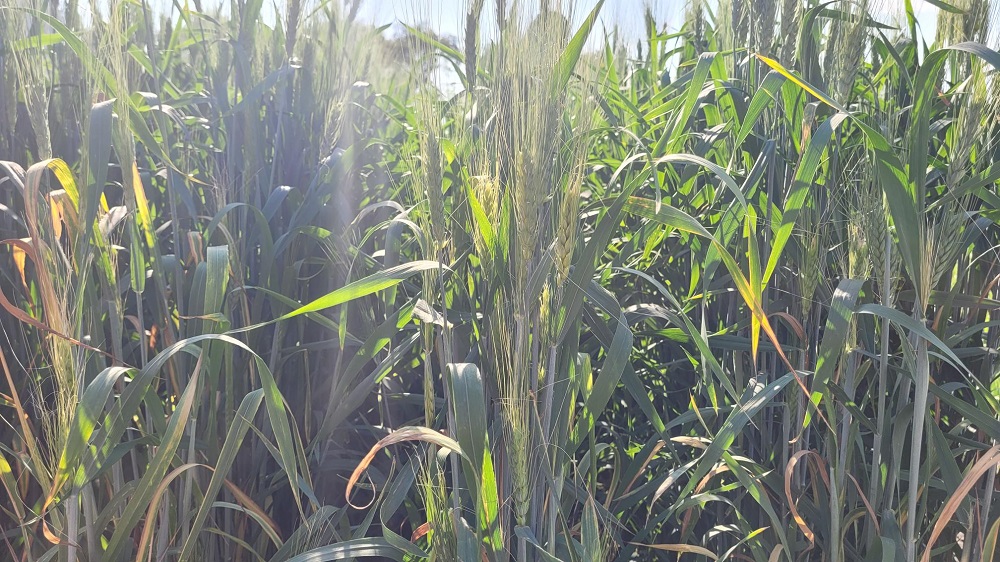Recent rains this past week have replenished soil moisture levels but stalled seeding progress for producers in the southeast. Currently, 18 per cent of the crop is in the ground. The region is behind the five-year average 51 per cent. Producers are ready to get into the fields once wet spots dry up and conditions are appropriate.
Lentils and field peas are furthest along in seeding at 42 and 39 per cent respectively. Durum is 26 per cent seeded, while spring wheat, barley, oats and canola are all 16 per cent seeded. Finally, soybeans are 7 per cent seeded.
The Bienfait and Estevan areas received a significant amount of rain this past week, reporting 78 mm. The Moosomin area also received rain this past week, recording 46 mm. Wolseley and the surrounding area received five mm of rain while other parts of the southeast received trace amounts.
Cropland topsoil moisture is rated as 19 per cent surplus, 79 per cent is adequate and 2 per cent is short. Hay and pasture land is rated as 4 per cent surplus, 88 per cent adequate, 7 per cent short and 1 per cent very short.
Many producers are waiting for conditions to improve enough to allow seeding to continue. Cattle are being moved out to pasture for the spring, with many anticipating community pastures will open soon.
Producers in the southwest are excited to see their early seeded crops popping up while they continue making great progress getting the crop in. The southwest is currently 43 per cent seeded, behind the five-year average of 63 per cent.
Fifty-one per cent of barley has been seeded. Canary seed is at 46 per cent, lentils 45 per cent and durum 42 per cent. Triticale is 7 per cent seeded and is the crop with the lowest amount of seeding progress.
The Vanguard region received 24 mm of rain this week and Shaunavon received 23 mm. Many parts of the southwest received less than 1 mm of rain this week, the Abbey area recorded 0.8 mm of rain while many others recorded only trace amounts.
The limited precipitation in the region is reflected in the topsoil moisture for the southwest. Cropland topsoil moisture is 81 per cent adequate and 14 per cent short. Hay and pasture land is rated at 69 per cent adequate and 27 per cent short.
Producers are busy seeding and spraying. Many are moving cattle out to pasture, while some are continuing to feed their animals to allow pastures a chance to grow. Producers are eagerly watching the weather forecast and hoping for some rain to keep moisture levels up.
Producers have made great seeding progress this week and the region has 21 per cent seeded. This is ahead of last year of 13 per cent and behind the five-year average of 33 per cent seeded.
Field peas and durum are both 52 per cent seeded and are leading the overall seeding progress. Barley is 36 per cent, lentils 34 per cent and spring wheat 31 per cent seeded. Flax is the furthest from completion with only 2 per cent in the ground.
There were no significant rain events this past week in the east-central region of Saskatchewan. The Esterhazy and Craik areas received 18 mm of rain this past week. Other parts of the east-central region received trace amounts of rain.
Cropland topsoil moisture conditions is 83 per cent adequate while hay and pasture land is at 80 per cent adequate. Fourteen per cent of topsoil moisture is short in both.
Producers are busy spraying when not working with cattle or seeding. Producers are concerned regarding potential dry spells impacting soil moisture levels and are hoping for rain soon.
Producers in west-central Saskatchewan have 54 per cent of their crop in the ground and are ahead of the five-year average of 50. Producers are aware of fire bans in the area as they progress in seeding. A lack of spring precipitation has allowed producers to be very efficient with their seeding operations.
Field peas and lentils are the most seeded with 78 per cent and 74 per cent respectively. Seventy per cent of the mustard is in the ground for the year. Barley is 55 per cent, spring wheat is 54 per cent and canola is 36 per cent seeded. Chickpeas have the least amount of acres seeded, with only 1 per cent in the ground.
There was no significant rain this past week in the region. Marengo received 22 mm of rain this week, while Eston received two mm. Many areas received only trace amounts of rain this week.
Cropland topsoil moisture is currently rated at 43 per cent adequate, 50 per cent short and Hay and pasture land topsoil moisture is rated as 23 per cent adequate, 59 per cent short and 18 per cent very short.
Producers are busy seeding, moving cattle to pasture and controlling gophers. Producers are watching their crops emerge and their pastures green up. Many are watching the weather forecast in the hopes of rain to keep growing conditions adequate and replenish limited moisture.
Producers in the northeast have been busy seeding this past week and have 35 per cent of this year’s crop in the ground. This is ahead of the five-year average of 29 per cent. Early seeded crops have also begun to emerge.
Seventy per cent of field peas, 57 per cent of spring wheat is in the ground. Fourty-six per cent of durum made in durum, 26 per cent of oats and 27 per cent of barley has been planted. Flax is the crop furthest from being complete, with 5 per cent of the crop being seeded.
There was no significant rain this week in the northeast, with seven mm being recorded in Torch River and Carrot River. The rest of the area received only trace amounts of rain.
Topsoil moisture is still mainly adequate for the northeast. Cropland topsoil moisture is at 80 per cent adequate and 18 per cent short. Hay and pasture land is 75 per cent adequate and 23 per cent short.
Producers are busy applying herbicides and moving cattle while also making progress with seeding. Many producers in this region are hoping for rain soon and are cautiously watching moisture levels.
Producers in the northwest have made great seeding progress this week due to limited rainfall and are now 55 per cent done seeding. This is ahead of the five-year average of 39 per cent.
Field peas are nearing completion with 90 per cent of the crop in the ground. Lentils is 86 per cent seeded and spring wheat is 81 per cent seeded. Canola is 35 per cent seeded and oats is 29 per cent seeded.
The northwest has received little rain this past week. North Battleford has received the most with 13 per cent. Rabbit Lake received 3 mm and many areas of the region only received trace amounts.
Topsoil moisture levels are beginning to degrade for the northwest. In cropland, 49 per cent has adequate topsoil moisture and 44 per cent is short. In hay and pasture land, the topsoil moisture is 43 per cent adequate, 38 per cent short and 19 per cent very short.
Producers are busy seeding, spraying and moving cattle out to pasture. Producers are keeping the fire bans in their minds as they progress through the season and are hoping for rain to ease the drying conditions.








